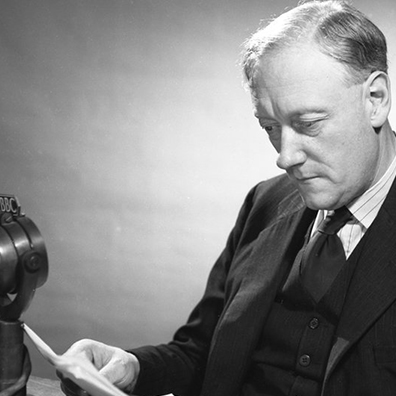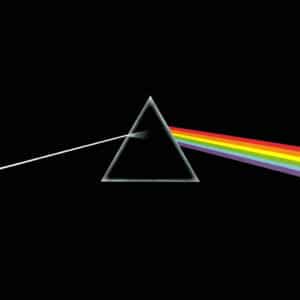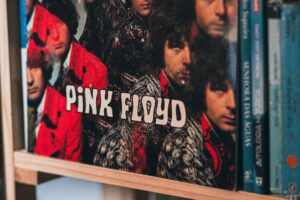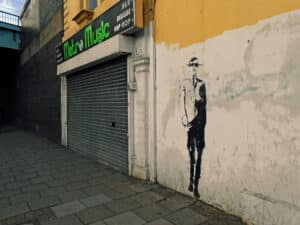
1968– The year the world stepped into modernity

Others might argue that 1945 was more noteworthy as it saw not only the end of the staggeringly destructive WW2, but also the use of the atomic bomb—an event that changed the course of history, ushered in the Cold War, and led the world into a split of either being in the camp of Russia or the United States.
I will leave the academic arguments of these two years to the historians however, and instead suggest to you a year that I think was all-around more culturally interesting, politically contentious, technologically significant, and a springboard to modernity. That year is 1968.
Why 1968 instead of something like 1964 when the musical British Invasion begin in earnes? Or one from the 1980s when Apple Computer started to change how we thought of, and interacted with, computers?
While I agree that those two are good suggestions among many candidates, I view 1968 as a very real and very clear boundary between the “olden days” of how things had been for decades and the more modern world in which we now live.
I realize that I am viewing this as an American, but it is as if 1968 was the year that the world collectively walked through a door into a modern future. In doing so, it left an era to which it would never return and could, from then on, only be viewed through the lens of nostalgia.
For Americans, 1968 saw the assassinations of Martin Luther King and Robert Kennedy the 2nd and 3rd earth-shattering slayings behind that of JFK only five years before. Vicious riots broke out in cities across the United States from Washington to Detroit to Los Angeles. Mayor Richard Daley of Chicago let loose his police force on the, for the most part, peaceful protestors at the Democratic National Convention. The images of the short-tempered police, armed and ready with truncheons, ended in a violence that was beamed into the living rooms of Americans of all classes and color.
1968 was the year in which Americans started to have serious doubts if the war in Vietnam could ever be won. North Vietnamese troops, with their widespread attacks in the Tet Offensive, shocked the Americans and South Vietnamese out of a deep-rooted complacency.

The North Vietnamese also took control of the city of Hue in late January even though they knew that they probably could not hold it long term. American Marines retook the city in March but destroyed it in the process—a perverse calculus that became for many the emblem of the futility for which parents were sending their sons to die. Then came the massacres at Mai Lai—something that could never be “unseen.” From then on, the American public remained deeply split and distrustful over the what the government was telling it about the war’s progress—or lack of it.
A world away, quite literally in outer space, the U.S. was making its final efforts to reach the moon. Apollo 8 became the first mission to orbit the moon and return the crew safely to earth. Only a few months later, in the summer of 1969, Neil Armstrong finally set foot on the lunar surface—capping the great space race effort.
Sports were enjoying what we can justifiably call a truly golden era. The 1968 Summer Olympics were held, in October surprisingly, in Mexico City and boasted the most participants ever. One world record after another tumbled, especially in track and field. It was at these games that we witnessed the waning vestiges of the true amateur sportsman. All too soon such top-quality sport became the domain of solely the professional.
Mexico City also gave us one of the most iconic images in the history of sport as the American sprinters John Carlos and Tommie Smith, as they stood upon the podium after receiving their medals, raised their gloved fists in protest of the treatment of African Americans back at home—a narrative that still has resonance today.
The Winter Olympics in Grenoble, France saw a young Frenchman by the name of Jean-Claude Killy setting a new and breathtaking standard for the range of skiing events. The speed and ferocity and yet grace with which he attacked the slopes had never been seen before and set a new standard for skiers to come.
Other sports around the world were enjoying a last period of relative quiet and innocence before the onslaught of the in-your-face advertising that is unfortunately the norm today. Sure, sports have always needed commercial sponsorships, but as I look at film clips from 1968, I see ice hockey arenas and basketball courts that were pristine compared to having every square inch plastered over with advertisements as they would be in the 21st century.
Yet not all was perfect as the Hong Kong flu killed one million that year alone. In Europe students were protesting in France and Germany against the elite, for more job opportunities, and what they saw as the old and “greedy” staid ways of their parents. Some of these protests were peaceful and died out with time—with the veterans even today calling themselves “The 68ers.” Other protests however and sadly, sowed the seeds of true violence and killing as the continent saw the rise of groups that morphed into Red Army Factions such as the Baaeder-Meinhof gang in Germany.
Russia, unhappy with the murmurings of independence in Czechoslovakia, formed up 200,000 Warsaw Pact troops and invaded Prague. Western Alliance nations were justifiably frightened both of the external military force of Russian, but also of elements within that threatened to topple the existing orders.
McDonald’s launched the Big Mac and Boeing flew the 747 for the first time—both in their own way becoming the symbol of these companies.
A small startup by the name of Intel set up shop in California and started to produce microchips. Positioned at the Ground Zero of microprocessor production, it led, and still does, the charge in the technological revolution.

Musically the Beatles, building on their 1967 hit album Sgt. Pepper’s Lonely-Hearts Club Band, released what is known as the White Album—another leap into experimentation and another clear break from the past. Recording technologies such as 4 and 8 tracks were affording musicians and sound engineers much better tools with which to lay down complex musical textures and music entered a period of fecundity and variety that broke new ground for a decade to come.
In the movie theaters, the film Bonnie and Clyde hit the screens and never again would action sequences be the same old overly dramatic fakes that had been the norm. In Bonnie and Clyde there had, for better and worse, never been anything like it in the realism of its violence.
What I think most about though of 1968 is that it is the year that the world started to be lived in color. Color televisions were becoming ever more popular and three-color (and more) printing much more widespread. Of course, people had not been walking around in just a two-tone black and white world in their everyday lives, but now they communicated in color and, I suspect, even started to think in color. It was a new world.
As we look at newsreels from the mid-1960s and then those of 1968 we step from the past into modernity. The colors we see are the perfect representation of the line between the old world and the new. I wonder, now in 2019, if there will ever be a year like 1968 again—one that clearly marks a new era and a new world. If there is, I can only imagine the color that it will bring.
In the meantime, what ho!
![]()







Thanks for the memories of the Big Mac, which I had the pleasure of learning about first hand. It was a disruption to the smoth operation of making hamburgers and cheese burgers because it included a new center bun and of course, a special sauce. One of the more earth shaking moments for those of us in high school was the court case that would no longer allow school administrators to dictate/restrict our clothing choices and length of hair. This had an effect on how students acted in class and was a relection of how society reacted to authority figures. The recounting of the Chicago riots during the Democratic convention reminded me of the school dress code being disallowed.
Interesting–definitely did not know that about the school dress codes. Shame they could not find a happy medium… Great year though!